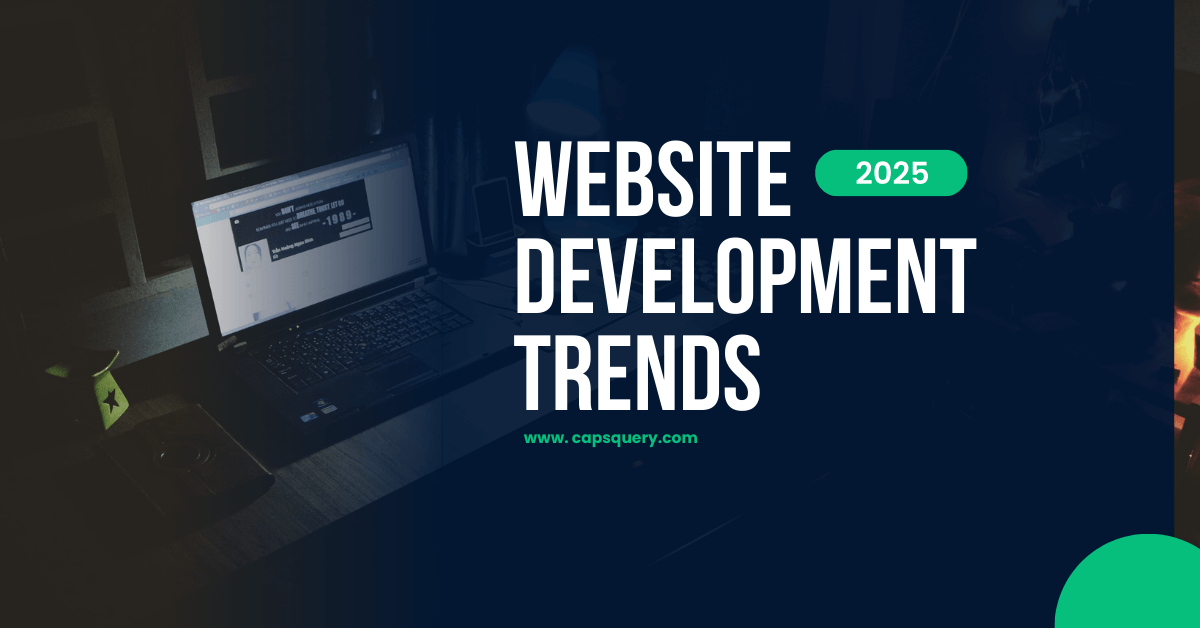
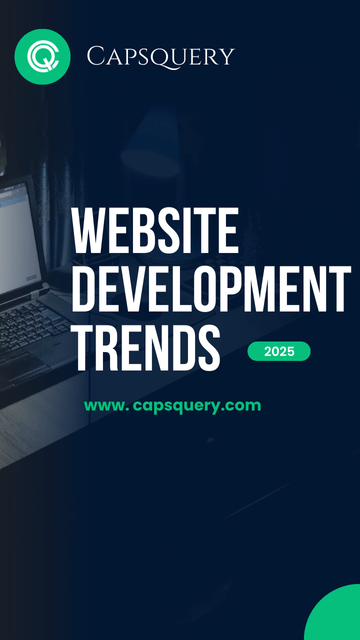


Do you want to build a website that adapts instantly to any device and learns from every click to serve users better than ever? Well, the website development trends in 2025 will cater exactly to your needs. From the flexibility of Headless CMS, on-demand power of serverless functions, and AI-powered coding assistants to API-first design, these tools let us focus on creativity and user delight instead of wrestling with web development infrastructure.
In this post, we’ll explore these website development game-changers one by one. Ready to see what the future of the web looks like? Let’s dive in!
A Headless CMS decouples content management from presentation, exposing content via APIs so developers can choose any frontend framework or device. This flexibility lets teams reuse the same content across websites, mobile apps, IoT devices, and more without redundant back-end work.
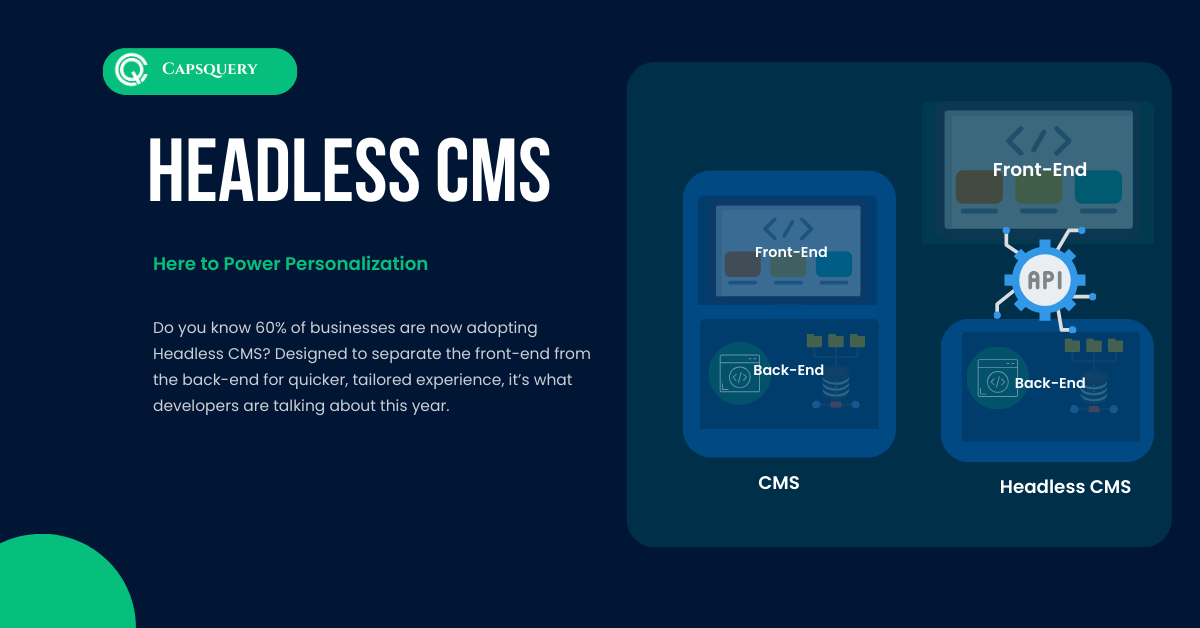
Well, Headless CMS adoption in web design is surging. And it rightly deserves this growth as it supports omnichannel strategies and enhances developer experience with native REST and GraphQL APIs. Some of the best headless platforms in 2025 offer composable architectures and transparent pricing. Thus making them enterprise-ready while maintaining excellent developer tooling.
By adopting a headless approach, organizations meet the objective of dynamic, future-proof content delivery and web design. Thus ensuring they can pivot quickly to emerging channels without overhauling the back end.
Serverless means developers deploy code without provisioning or managing servers. While the cloud provider automatically scales and bills per execution. This frees website development teams from infrastructure overhead. Thus, letting them focus on business logic and user experience. Serverless enhances performance by dynamically allocating resources based on demand. Thereby, reducing latency during traffic spikes.

With the elimination of server management, development cycles are accelerated. As a result, small teams can deliver robust features faster and more cost-effectively. Serverless also aligns neatly with event-driven patterns; functions can trigger API calls, database updates, or message queue events. Thus simplifying microservices architectures. Together, serverless and headless CMS form a powerful duo for agile, scalable web experiences.
Artificial intelligence in website development is rapidly redefining coding workflows across three dimensions: assistance, debugging, and full-stack generation.
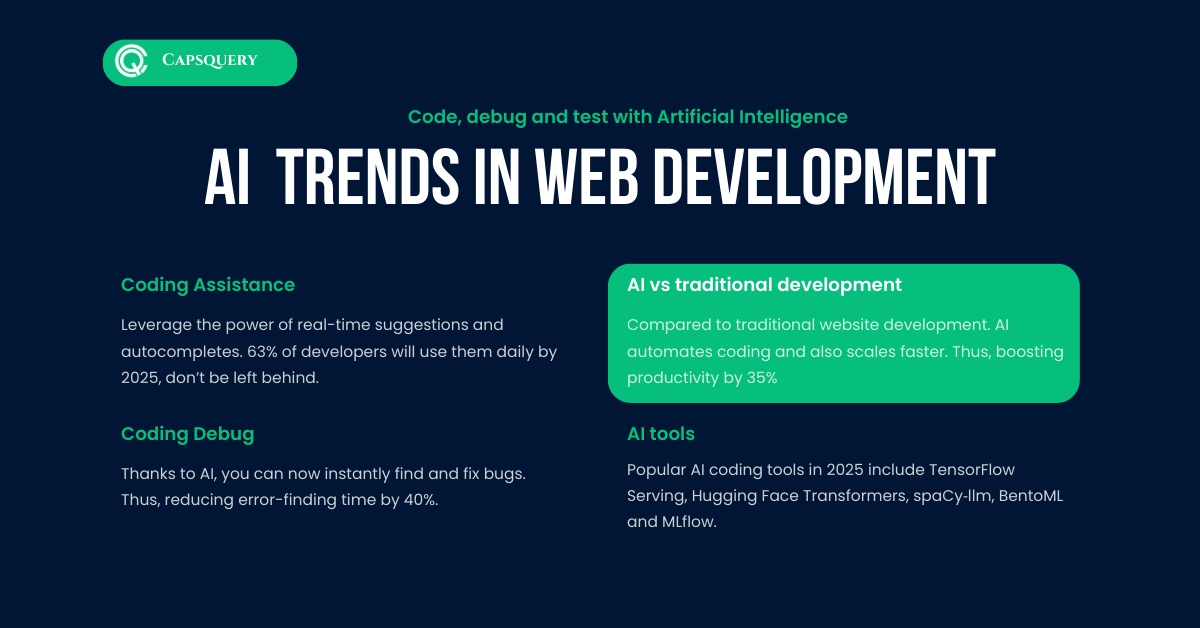
Tools like Windsurf (formerly Codeium) enable “vibe coding,” where AI generates boilerplate and even complex functions from natural-language prompts. This shift is transforming developers into “builders,” focusing on experimentation and feedback rather than repetitive tasks. Amazon’s secret “Kiro” project uses AI agents to draft, optimize, and debug code in real-time. Thus, integrating with existing knowledge bases will streamline developer workflows.
Mark Zuckerberg predicts AI will function as a mid-level engineer by 2025, capable of autonomously writing significant portions of code. However, experts warn that overreliance can introduce security and quality risks without proper human oversight.
Beyond proprietary platforms, open-source frameworks and specialized services automate time-consuming tasks. These include but are not limited to quality assurance, unit tests, and code reviews. Thus freeing developers to innovate with user-facing features. As AI tools mature, teams must balance speed with diligence, integrating AI outputs into rigorous CI/CD pipelines to catch issues early.
API-First means designing and documenting APIs before building the UI, treating APIs as first-class products. This approach ensures well-structured, versioned interfaces that frontends, partners, and third-party services can trust. An API on a portfolio website can dynamically display data. These includes but is not limited to recent projects, skills, or even external data like weather or news.
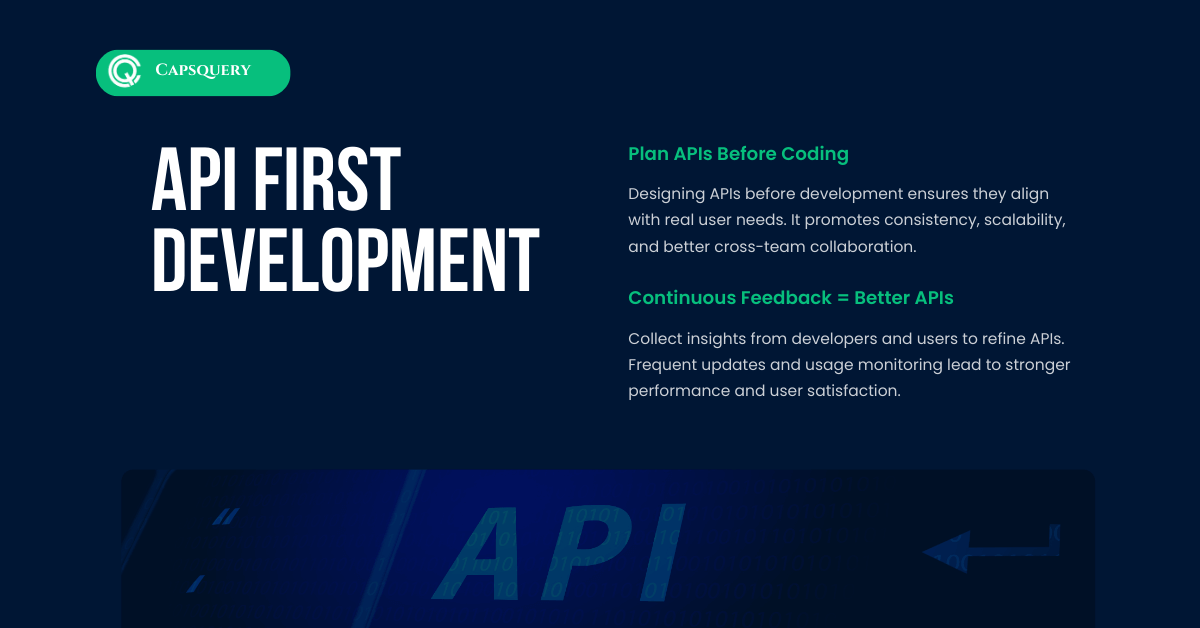
API-First design has become standard for creating secure, adaptable solutions that form the backbone of modern applications. It also plays a very crucial role in webEmpathyFirst Media reports that companies reusing private internal APIs cut development time by 30–40%, speeding up project delivery without sacrificing consistency.
By prioritizing APIs early, teams avoid brittle integrations, enable parallel frontend and backend workstreams, and foster an ecosystem of reusable building blocks.
Well, the success of API-first development depends on early and continuous evaluation. Involving stakeholders from the start ensures the API design aligns with real user needs. Moreover, automated testing and comprehensive documentation support objective assessments throughout the lifecycle.
Refine the API with continuous improvement. Systematically collect and analyze feedback from both developers and end-users. Moreover, monitoring API usage, integrating feedback loops, and updating documentation enable teams to adapt APIs to evolving requirements and optimize performance.
The convergence of Headless CMS, Serverless Architecture, AI-powered tooling, and API-First design anchored by rigorous evaluation and continuous improvement defines web development in 2025. These trends shift the focus from infrastructure maintenance to delivering value. These include faster feature releases, personalized user journeys, and resilient systems that adapt to changing needs.
As you plan your next web project, embrace these trends holistically. Start with an APi-first headless backend, deploy serverless functions for scalable microservices, integrate AI assistants to speed up development, and embed feedback loops into your workflow. Iteratively train your teams, close gaps uncovered by evaluation, and use every bit of user feedback to refine your approach. In doing so, you’ll not only stay ahead of the curve, but you’ll also set the pace for others to follow.
Website Development | Mobile App Development | Application Development
We will definitely get back in touch with you over mail within 12 Hours.
In-case you have not heard from us within 12 hours, kindly check your spam once.
I'm a software consultant. I've 7+ years of industry experience. I'd love to connect with you and brainstorm your custom software needs. It's my responsibility to find you the best solution.
ANAND GUPTA
Drop your details and we'll get in touch with you within 12 hours.
Reach us for
Talk to us